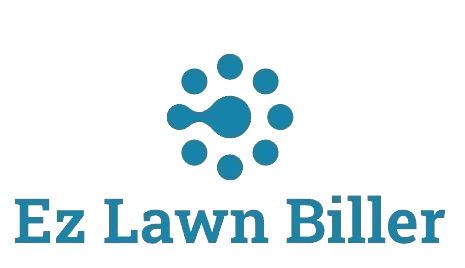Optimize Routes: Best Practices for Lawn Care Pros
In the competitive world of lawn care, optimizing your routes is essential for maximizing efficiency and profitability. By refining how you schedule and execute services, lawn care professionals can reduce travel time, lower fuel costs, and enhance customer satisfaction. This blog post delves into best practices for route optimization, offering practical tips and insights that can significantly benefit your lawn care business.
As a lawn care professional, your time is invaluable. Every minute spent driving between jobs is a minute not spent tending to your clients’ lawns. Effective route optimization not only maximizes your productivity but also improves the overall customer experience.
In the following sections, we will explore various strategies for optimizing routes, the importance of route planning and the tools available to help streamline your operations. Whether you’re an independent service technician or managing a larger lawn care company, these practices can lead to significant improvements in your workflow.
The Importance of Route Optimization
Route optimization is the process of determining the most efficient path for service delivery. This is particularly important in lawn care, where professionals often juggle multiple clients across varying locations. According to a study by the American Society of Landscape Architects, businesses that implement route optimization can reduce travel time by up to 20%.
By minimizing travel distances, lawn care companies can lower fuel costs, reduce wear and tear on vehicles, and increase the number of clients served each day. Furthermore, optimized routes can lead to higher customer satisfaction, as services are performed more promptly.
As an example, consider a lawn care business servicing multiple neighborhoods in a city like Denver, Colorado. By strategically planning routes that cluster jobs in the same area, the business can save considerable time and resources, allowing technicians to complete more services within their workday.
Utilizing Technology for Route Planning
One of the most effective ways to optimize routes is by leveraging technology. Various software solutions, such as lawn service software, enable lawn care professionals to map out their daily jobs efficiently. These platforms often include features that allow users to visualize routes and make adjustments based on traffic conditions and customer requirements.
For example, GPS routing tools can provide real-time traffic updates, helping technicians avoid congestion while traveling. Additionally, many of these tools can integrate with lawn billing software, streamlining the entire process from service delivery to invoicing.
Tools like EZ Lawn Biller not only simplify the billing process but also enhance route management. With automated scheduling and optimized routing features, users can focus on delivering quality service rather than spending time on administrative tasks. This integration ensures that as jobs are completed, billing is executed seamlessly, further enhancing overall efficiency.
Best Practices for Route Optimization
Implementing effective route optimization strategies requires a combination of planning, technology, and flexibility. Here are some best practices to consider:
1. Grouping Jobs by Location
One of the simplest yet most effective strategies is to group jobs by proximity. By scheduling services in the same neighborhood together, you can minimize travel time and costs. For instance, if you have multiple clients in the same subdivision, try to arrange your schedule to handle all those jobs consecutively.
This not only saves fuel but also allows for better time management. Technicians can finish multiple jobs in one area before moving on to another, thereby increasing the number of clients served in a day.
2. Time of Day Considerations
Another important factor in route optimization is considering the time of day. Different times can have varying traffic patterns that can impact your schedule. For example, morning rush hour might increase travel times significantly in certain areas.
By planning your route around expected traffic conditions, you can enhance efficiency. Tools that provide real-time traffic updates can be invaluable in these situations, allowing for adjustments on the fly to avoid delays.
3. Regularly Review and Adjust Routes
Route optimization is not a one-time task. Regularly reviewing and adjusting routes based on client needs, seasonal changes, and traffic patterns is crucial. Over time, certain routes may become less efficient due to new construction or traffic changes.
By staying proactive and updating your routing strategies, you can ensure that your lawn care business operates at peak efficiency. Taking time each month to analyze your routes and service areas can yield significant long-term benefits.
Incorporating Customer Feedback
Customer feedback can offer valuable insights into how your routing and service delivery can improve. Engaging with clients about their preferences can help you better understand their scheduling needs and expectations.
For instance, if multiple clients in an area express a preference for evening services, it may be worth adjusting your route to accommodate these requests. This not only improves customer satisfaction but also enhances your reputation as a responsive service provider.
Training Your Team
Effective route optimization also depends on training your team. Ensure that all staff members understand the importance of following optimized routes and using the tools at their disposal.
Provide your team with training sessions on the software tools you utilize, such as the lawn service app that helps in managing schedules and tracking service details. A well-informed team can identify issues and provide feedback on routing strategies, contributing to ongoing improvements.
Leveraging Data Analytics
Data analytics can play a significant role in optimizing routes. By analyzing service data, lawn care businesses can identify trends in client requests, service times, and travel distances.
Utilizing a comprehensive service company software that tracks this data can inform your decisions about resource allocation and route planning. Over time, these insights can lead to optimized schedules that enhance efficiency and profitability.
Conclusion
In summary, optimizing routes is essential for lawn care professionals looking to enhance efficiency and customer satisfaction. By implementing best practices such as grouping jobs, considering traffic patterns, and leveraging technology, businesses can reduce travel time and improve overall service delivery.
The significance of effective route management cannot be overstated. It not only impacts your bottom line but also influences client relationships and business reputation. As competition in the lawn care industry continues to grow, taking actionable steps toward optimizing routes will position your business for success.
By embracing innovative solutions like EZ Lawn Biller and prioritizing route optimization strategies, you can take your lawn care business to the next level. Start exploring the possibilities of route management and take advantage of the efficiencies that await.




